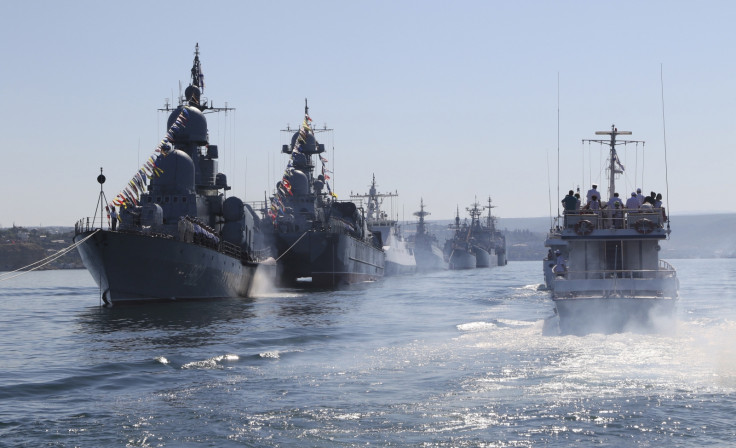Russia and Iran stage naval war games to showcase combined strength

In an effort to show their combined strength around Iranian waters, Russia and Iran held joint naval war games on Tuesday, 11 August.
Iranian destroyer Damavand, that has the ability to carry helicopters, anti-ship missiles, surface-to-air missiles, torpedoes, modern guns and air defence guns participated in the drill, while a team of Russian warships engaged in joint exercises, Iran's state-run news agency FNA reported.
Russian warships Volgodonsk and Makhachkala had docked at Iran's Anzali port on Sunday (9 August). Ahead of the training exercise, Admiral Ahmad Reza Baqeri, commander of Iran's fleet of warships said: "Iranian Navy's Destroyer Damavand and missile-launching warships Joshan and Peikan will take part in the joint drills with the Russian fleet."
He added that 200 Iranian naval forces would also be present in the exercises. "The Russian fleet would leave the Iranian waters for Azerbaijan after the drills," the commander said.
The joint naval exercise shows increased military ties between Russia and Iran after the two countries signed multiple arms agreements in the recent past.
However, this could cause some concern for world powers, as Russia has agreed to help the Middle Eastern country in constructing new nuclear reactors.
On 14 July, Iran reached a historic agreement over its nuclear programme with the United States, Britain, France, China, Russia and Germany, over easing sanctions against Tehran in exchange for reducing its ability to produce nuclear weapons.
Russian backing for Iran has been crucial for the nation. A senior Russian official had recently said that they would upgrade the advanced S-300 anti-missile system before delivering it to Iran.
So far, Western pressure has delayed the sale of advanced anti-missile systems to Tehran, but reports suggest that Iran could unveil a domestic version of the system in early September, to safeguard its nuclear programme.
© Copyright IBTimes 2025. All rights reserved.




















